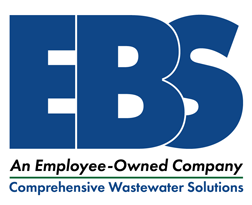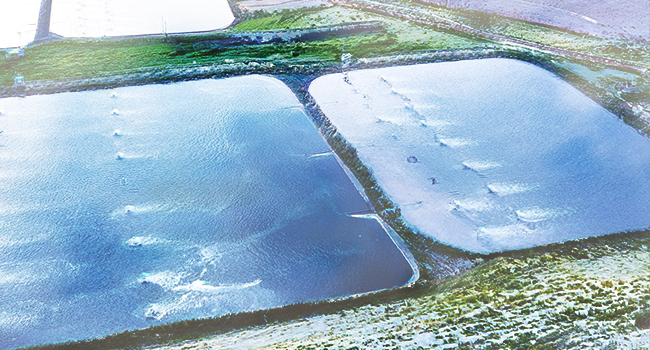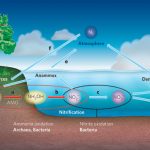Being proactive during cold weather can noticeably reduce wastewater treatment plant (WWTP) upsets.
A reduction in temperature can cause a well-running WWTP to have issues almost overnight. Bacteria do not remove BOD or reproduce as effectively during the colder months of the year and generally favor temperatures between 68 and 95° F (20 – 35° C). In fact, for every 10° C decrease in temperature from 35 °C, bacterial reaction rates decrease by half. This decrease in biological activity is why WWTP upsets tend to be more problematic during the winter. While temperature cannot be fully controlled within a WWTP, there are a few things you can do ahead of time to ensure your system is as healthy as possible during the winter to boost microbial activity.
Adjust nutrient feed rates to maintain sufficient macronutrient residuals.
Nitrogen and phosphorous are necessary for bacterial reproduction, and therefore BOD removal. These macronutrients should be supplied to an activated sludge treatment system at a ratio of 100:5:1 (BOD:N:P) to ensure optimal BOD removal and new bacteria growth. Maintaining adequate nutrient residuals is of particular importance during the winter months when bacteria multiply at a slower rate. With proper nutrient control, your treatment system will be more robust and not require as much buffering time when an upset does occur. Typically, ammonia-nitrogen and orthophosphate (as P) residuals should be maintained between 0.1-0.3 mg/L at the end of aeration in an aerated lagoon and between 0.5-1.0 mg/L in an activated sludge aeration basin.
However, lower residuals may be required based on permit limitations. When lower residuals need to be maintained, it becomes even more critical to monitor the BOD:N:P ratio of your system to make certain it is not nutrient deficient. Residuals must be measured in the active form of nitrogen and phosphorus, as ammonia and orthophosphate. There are many products available on the market to meet the macronutrient demands of your WWTP, but perhaps the safest and easiest to control are pH-neutral blends of nitrogen and phosphorous. These customizable blends can be tailored to meet the specific nitrogen and phosphorous ratio required for your system which ensures you don’t overspend or underfeed.
Know your hydraulic retention time
While this topic is more critical for aerated lagoons than other types of treatment systems, it does apply to all biological wastewater treatment systems. Each WWTP has a point at which the greatest BOD conversion has occurred. When temperatures decrease, this point occurs further downstream in the system because the bacteria are just not as active. Thus, BOD reduction takes longer in the winter making aerated lagoon retention time much more critical than during the summer months. Knowing this retention time and its characteristics (channeling, aerator placement effectiveness, etc.) helps when responding to upsets during cooler months.
Increase the number of active bacteria available and get them working faster
Since bacteria struggle to degrade BOD in cooler temperatures, proactively increasing the amount of biomass available – whether in the form of increased MLSS or bioaugmentation – can help maintain the robustness of the bacterial population. If you choose to pursue bioaugmentation, consider incubating the bacteria prior to addition rather than tossing a bag of dry, commercial bacteria directly into the WWTP. EBS clients use our patented Bacterial Acceleration Chambers (called BAC and BAC-2 units) to maximize the number of active bacteria entering the system for a given bioaugmentation product. The utilization of BAC technology first allows the bacteria to germinate out of their spore form, which then allows them to immediately begin degrading BOD as soon as they enter the WWTP versus somewhere downstream. Secondarily, the BAC unit allows the bacterial product to multiply 100-1000 times in quantity, giving one “more bang for your buck.” This is a double benefit over feeding dry bags of bacteria into a system, as you’re using a larger percentage of the retention time to obtain better BOD reduction and the cost of your bioaugmentation program is reduced.
Other Growth Pressures
The remaining biological growth pressures: dissolved oxygen, type and amount of food (BOD), toxicity and inhibition, and pH will also have a more pronounced impact on the treatment system during cooler weather. Proper monitoring and control of all eight biological growth pressures are more important than ever during periods of cooler temperatures.


